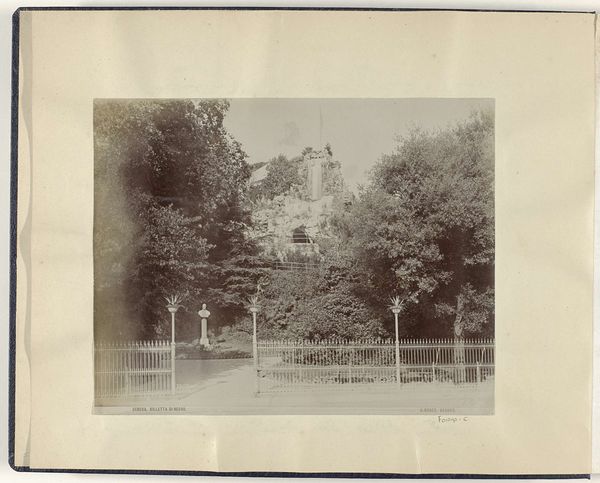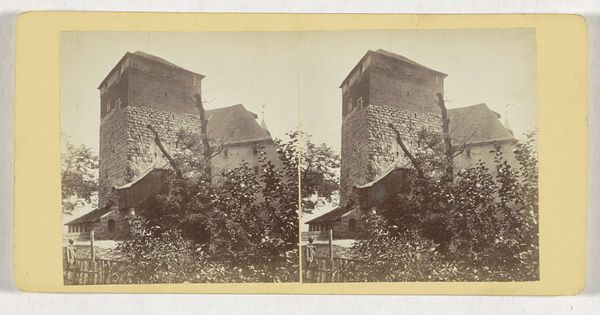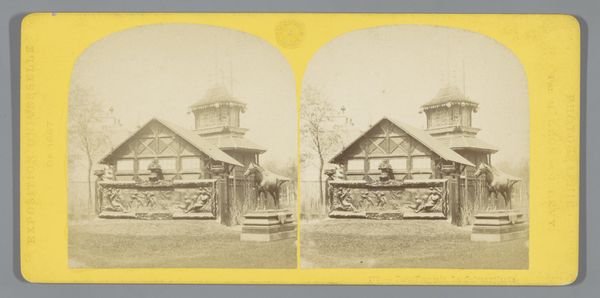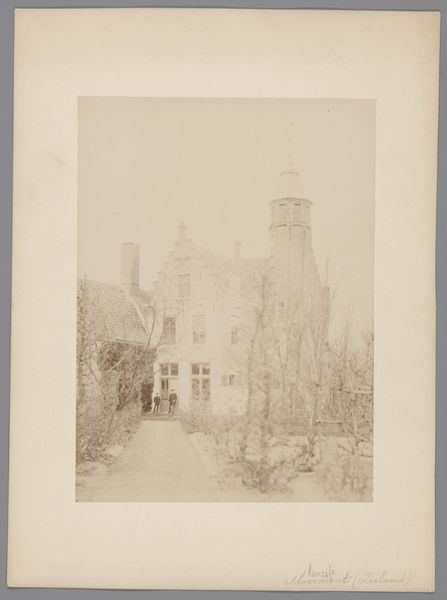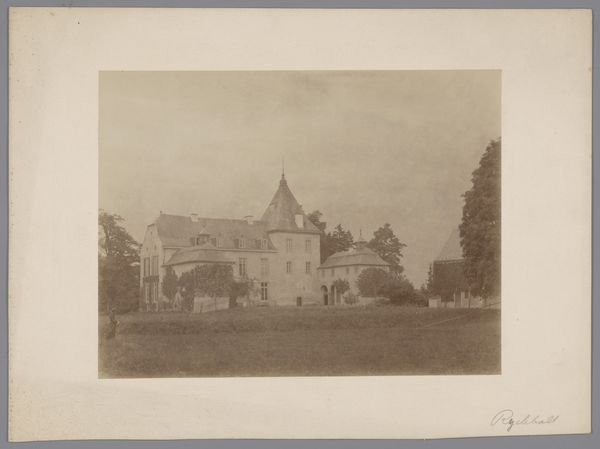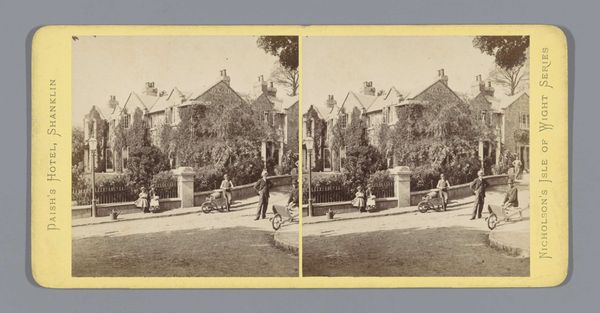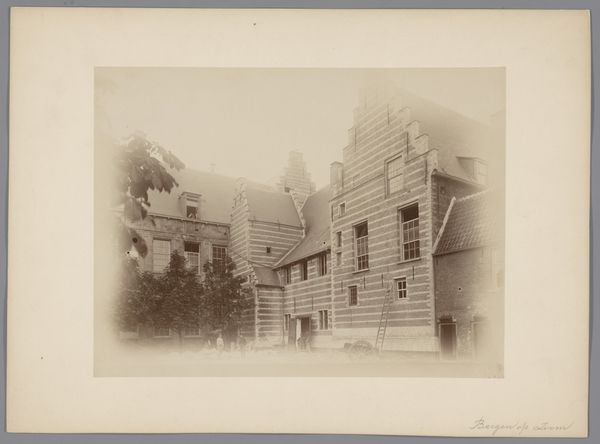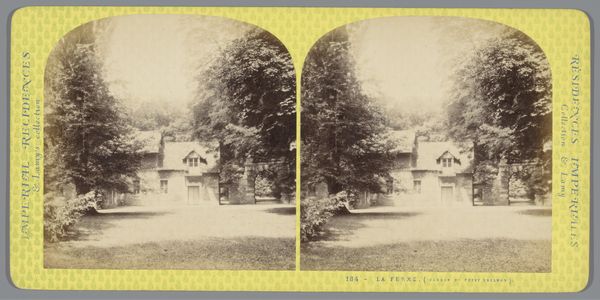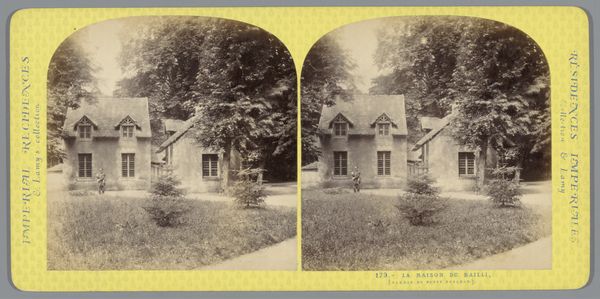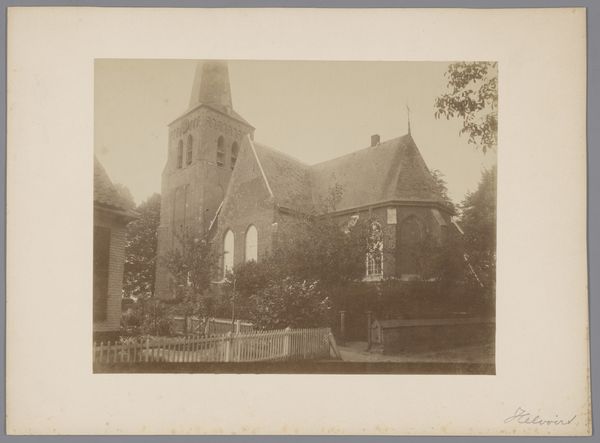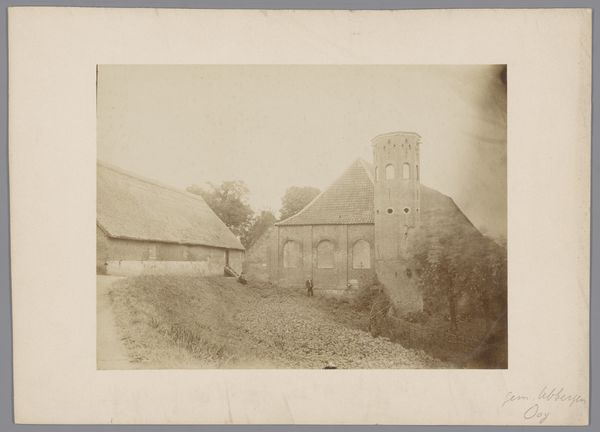
#
photo of handprinted image
#
toned paper
#
water colours
#
pencil sketch
#
possibly oil pastel
#
coloured pencil
#
underpainting
#
watercolour bleed
#
watercolour illustration
#
watercolor
#
building
Dimensions: height 87 mm, width 178 mm
Copyright: Rijks Museum: Open Domain
Curator: I'm immediately drawn in by the almost ghostly quality of this image. It's so hushed and still, like stepping back in time. Editor: Agreed. There's a strange romantic quality amidst this almost industrial gaze upon brick and stone. Let's contextualize what we're seeing. This piece is attributed to Johann Friedrich Stiehm and is titled "Walpurgiskapel op de burcht in Neurenberg." It's dated somewhere between 1868 and 1888, so we’re in the late 19th century. What grabs me most is the materiality—this seems to be a hand-printed image, probably employing watercolours and perhaps some colored pencil work on toned paper. The layered process must have been intricate. Curator: The toning really lends a feeling of aged nostalgia. I keep coming back to the contrast of the solid, heavy brick tower against the delicate foliage. It’s such a beautifully strange marriage of the built environment and the natural one. It makes me feel so small. Editor: Right, and consider the craft behind it. Before mass photographic reproduction, rendering architecture in such a detailed manner required specialized skills and artisanal labor. Look at how the textures of the brick, roof tiles and wooden elements of the adjacent houses come together to create such a rich surface, an interplay of handwork and documentation of architecture as vernacular design. It blurs the lines between objective record and crafted object. Curator: I think you've really hit on something with that blurring. I'm wondering, too, if Stiehm was intentionally playing with perception. There's almost a dreamlike effect created by the light and shadow—especially with that little chapel bell tower peeking above the buildings—it almost suggests other worlds or dimensions. The tower almost fades, then strengthens. Editor: Absolutely. Each element represents layers of labor—the masons, carpenters, printmakers, all contributing to a constructed reality captured and reinterpreted. In contrast, with the photographic document, even a hand-printed image is subject to consumption and circulation, isn't it? It brings these sites and scenes to larger audiences. Curator: Thinking about it now, this isn’t just a representation of Nuremberg, it is Stiehm’s unique mediation upon his experience in this unique part of town, one both built by the efforts of labourers and artisans, and naturally transforming beyond its creators. Editor: Exactly. It leaves me thinking about the complex relationship between creation, labour, memory, and image that photography at the time made newly possible and profoundly articulated.
Comments
No comments
Be the first to comment and join the conversation on the ultimate creative platform.

